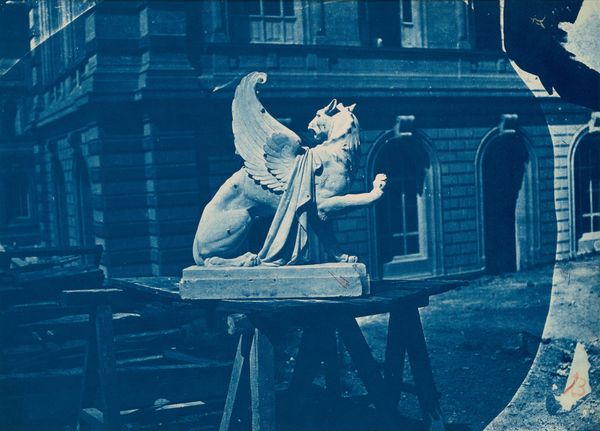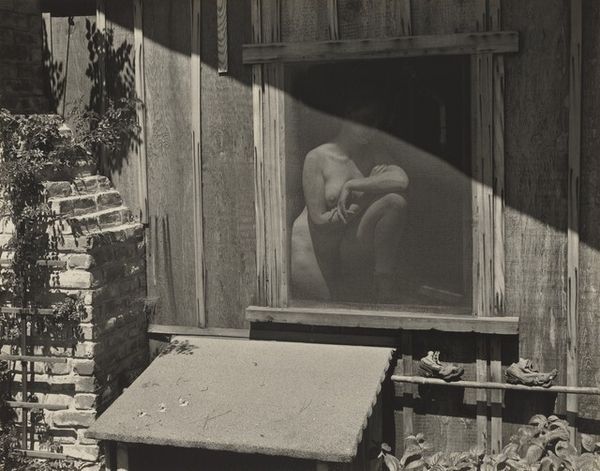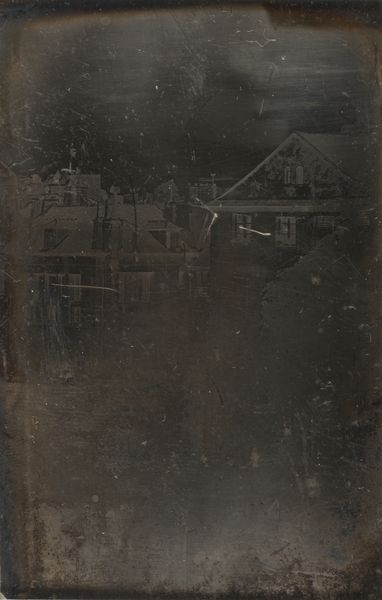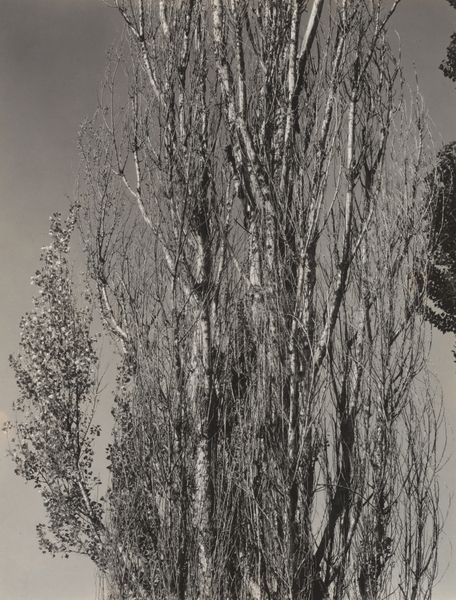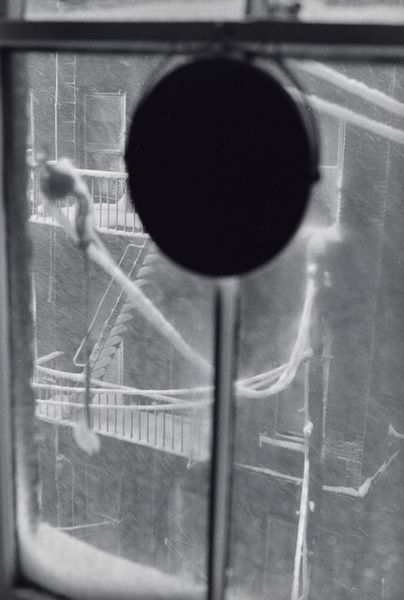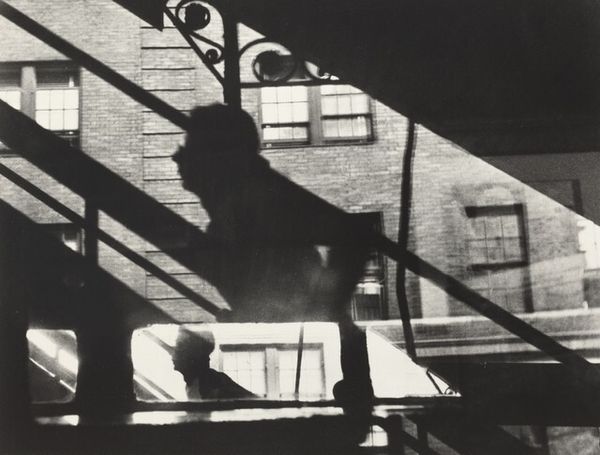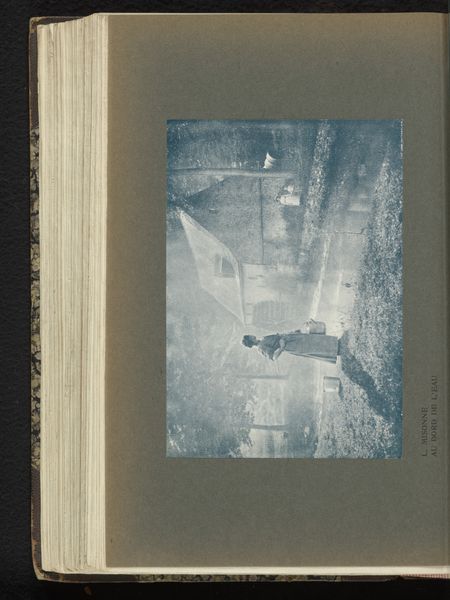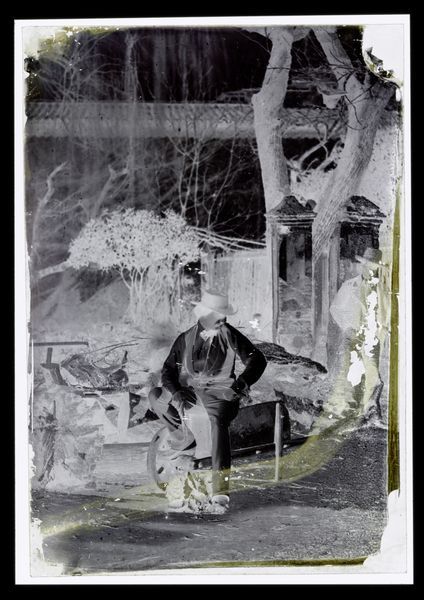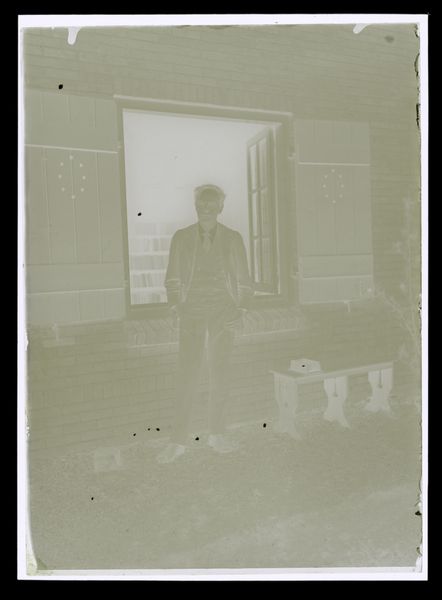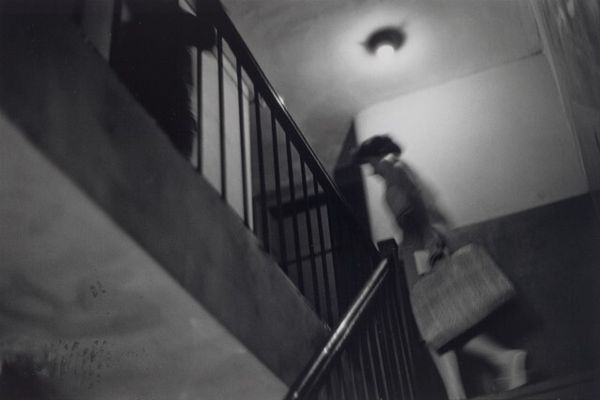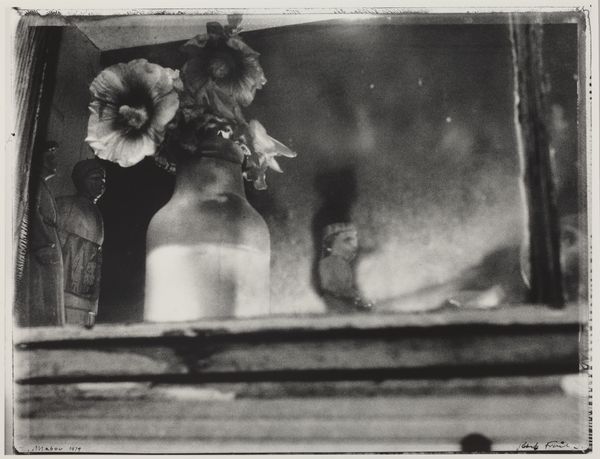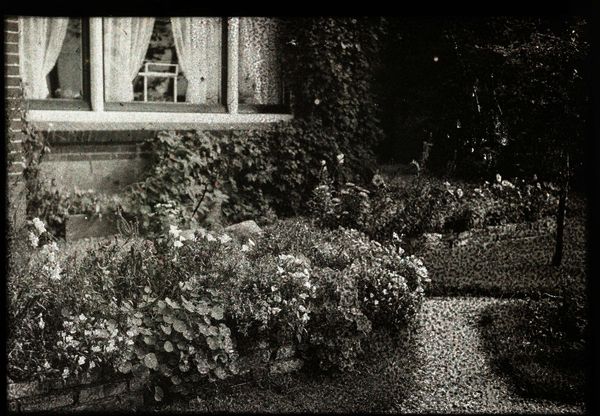
Sculpture de griffon sur un chantier à Marseille (Sculpture of a Griffin on a construction site in Marseille) c. 1866 - 1868
0:00
0:00
photogram, photography, sculpture
#
urban landscape
#
photogram
#
photography
#
sculpture
#
urban photography
#
realism
Dimensions: image/sheet: 28.26 × 38.1 cm (11 1/8 × 15 in.)
Copyright: National Gallery of Art: CC0 1.0
Editor: Here we have Adolphe Terris’s photograph, "Sculpture de griffon sur un chantier à Marseille," taken sometime between 1866 and 1868. The striking blue hue of this photogram creates such an eerie mood. What’s your interpretation of this piece, especially given its historical context? Curator: That's a perceptive initial reading. What stands out to me is the intersection of mythology and modernity captured here. The griffin, a symbol of power and guardianship deeply embedded in ancient mythologies, is juxtaposed with the very contemporary scene of a construction site. It prompts us to consider how societies use and repurpose historical narratives. Why place this ancient figure amidst industrial progress? Editor: Maybe it's about anchoring progress in the past, suggesting continuity and stability through times of change? Curator: Precisely! And it urges us to question whose past is being memorialized. Marseille at this time was undergoing massive urban renewal projects which, inevitably, shifted the demographic and power structures in the city. Do you think the inclusion of the griffin sculpture here suggests a reclaiming of power by certain elites through referencing mythological superiority? Editor: That's fascinating! I hadn't considered the political implications of choosing a griffin in particular. It makes me wonder who this artwork was really for. Curator: Absolutely, let's think about access. Photography, though more accessible than painting, still carried class connotations. It pushes us to think about the artwork’s audience in the context of Marseille’s shifting social dynamics at the time. What stories are being told and for whom? Editor: I learned so much thinking about it from that point of view. It feels so much richer. Curator: Indeed. This intersectional reading reveals the photograph not just as a historical record, but as a site of cultural negotiation and social commentary.
Comments
No comments
Be the first to comment and join the conversation on the ultimate creative platform.
